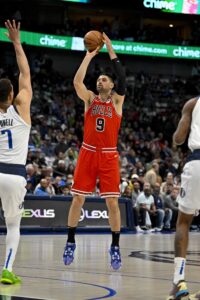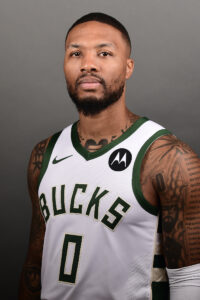Although a number of big-money free agent contracts were completed over the summer, the most lucrative deals signed by players so far in 2023/24 have been contract extensions. And many of those extensions have been maximum-salary deals.
[RELATED: 2023/24 NBA Contract Extension Tracker]
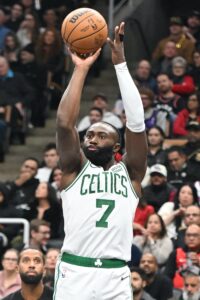 Because those extensions won’t go into effect until at least the 2024/25 season and the NBA won’t finalize the ’24/25 salary cap until next summer, we can only ballpark what many of year’s maximum-salary contracts will look like based on the league’s latest cap estimates.
Because those extensions won’t go into effect until at least the 2024/25 season and the NBA won’t finalize the ’24/25 salary cap until next summer, we can only ballpark what many of year’s maximum-salary contracts will look like based on the league’s latest cap estimates.
The NBA’s most recent projection for ’24/25 called for a $141,000,000 cap, which is the number we’ll use to project next season’s maximum salaries.
Listed below are the early maximum-salary projections for 2024/25. The first chart shows the maximum salaries for a player re-signing with his own team — a player’s previous club can offer five years instead of four, and 8% annual raises instead of 5% raises. The second chart shows the maximum salaries for a player signing with a new team.
A player’s maximum salary is generally determined by his years of NBA experience, so there’s a wide gap between potential earnings for younger and older players. Unless they qualify for a more lucrative extension by meeting certain performance criteria, players with no more than six years of NBA experience are limited to a starting salary worth up to 25% of the cap. For players with seven to nine years of experience, that number is 30%. For players with 10 or more years of experience, it’s 35%.
Here are the the early max-salary projections for 2024/25:
A player re-signing with his own team (8% annual raises, up to five years):
| Year | 6 years or less | 7-9 years | 10+ years |
|---|---|---|---|
| 2024/25 | $35,250,000 | $42,300,000 | $49,350,000 |
| 2025/26 | $38,070,000 | $45,684,000 | $53,298,000 |
| 2026/27 | $40,890,000 | $49,068,000 | $57,246,000 |
| 2027/28 | $43,710,000 | $52,452,000 | $61,194,000 |
| 2028/29 | $46,530,000 | $55,836,000 | $65,142,000 |
| Total | $204,450,000 | $245,340,000 | $286,230,000 |
The “6 years or less” column here is what the new extensions for Anthony Edwards, Tyrese Haliburton, and LaMelo Ball will look like if none of them make an All-NBA team in 2024. All three players have Rose Rule language in their contracts, however, and could move up to the 30% max column (“7-9 years”) if certain criteria are met.
The 30% max column will also apply to players who reach the free agent market next summer with between seven and nine years of NBA experience under their belts. That would be Pascal Siakam‘s maximum contract with the Pacers, for instance.
The third column (35%) will apply to the super-max extension signed by Celtics star Jaylen Brown. Devin Booker and Karl-Anthony Towns also previously signed super-max extensions that will begin in 2024/25, though those deals are for four years, so they’ll be worth a projected $221,088,000 instead of the projected $286MM+ that Brown will earn over five seasons.
It’s worth noting that when many of these contracts were signed, their projected values were initially reported based on a 10% cap increase rather than a 3.7% bump, since the estimates were coming from agents and represented best-case scenarios.
Ten percent would be the maximum allowable increase and it’s not out of the question that will happen — the NBA’s cap has risen by 10% in each of the past two summers. In that scenario, the maximum total value of these contracts would increase to approximately $217MM (25% of the cap), $260MM (30%), and $304MM (35%), respectively.
A player signing with a new team (5% annual raises, up to four years):
| Year | 6 years or less | 7-9 years | 10+ years |
|---|---|---|---|
| 2024/25 | $35,250,000 | $42,300,000 | $49,350,000 |
| 2025/26 | $37,012,500 | $44,415,000 | $51,817,500 |
| 2026/27 | $38,775,000 | $46,530,000 | $54,285,000 |
| 2027/28 | $40,537,500 | $48,645,000 | $56,752,500 |
| Total | $151,575,000 | $181,890,000 | $212,205,000 |
If a player changes teams as a free agent, he doesn’t have access to a fifth year or 8% raises. So if someone like Tyrese Maxey were to sign an offer sheet with a new team next summer, he’d be limited to a four-year deal projected to be worth approximately $151.6MM.
If a veteran free agent with between seven and nine years of NBA experience – such as Siakam – wants to change teams in 2023, he would be able to sign a four-year contract worth up to a projected $181.9MM.
Paul George, Klay Thompson, or another veteran with 10+ years of experience would be able to earn up to $212.2MM across four years if they change teams as free agents in 2024. While it’s unlikely that George, Thompson, or any other 10-year veteran changes teams and signs a four-year, maximum-salary deal next offseason, it could theoretically be the first time in NBA history that a player receives a $200MM+ contract while changing teams.
Again, a 10% cap jump rather than a 3.7% increase would push these figures higher. In that scenario, a 25% max contract would be worth nearly $161MM, a 30% deal would be worth about $193MM, and a 35% contract would work out to approximately $225MM.
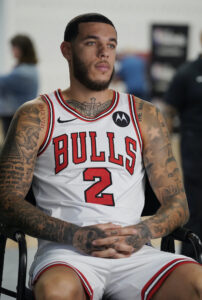 After missing half of the 2021/22 season and all of ’22/23, Ball still wasn’t ready to play this fall. The point guard, who has undergone multiple procedures in an attempt to address his knee problems, received a
After missing half of the 2021/22 season and all of ’22/23, Ball still wasn’t ready to play this fall. The point guard, who has undergone multiple procedures in an attempt to address his knee problems, received a 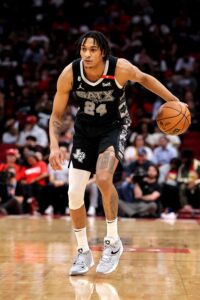 In that scenario, the player’s incoming value for the receiving team for matching purposes is determined by averaging his current-year salary and the salaries in each year of his new extension. His current team, on the other hand, simply treats his current-year salary as the outgoing figure for matching purposes.
In that scenario, the player’s incoming value for the receiving team for matching purposes is determined by averaging his current-year salary and the salaries in each year of his new extension. His current team, on the other hand, simply treats his current-year salary as the outgoing figure for matching purposes.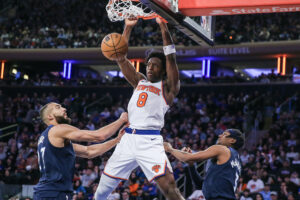 Certain extension-eligible players, such as
Certain extension-eligible players, such as 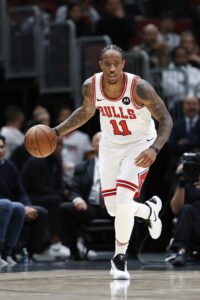
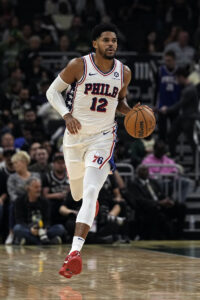
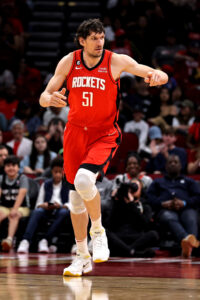 December 19:
December 19: